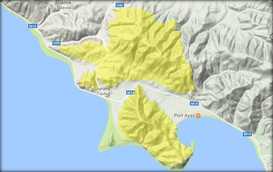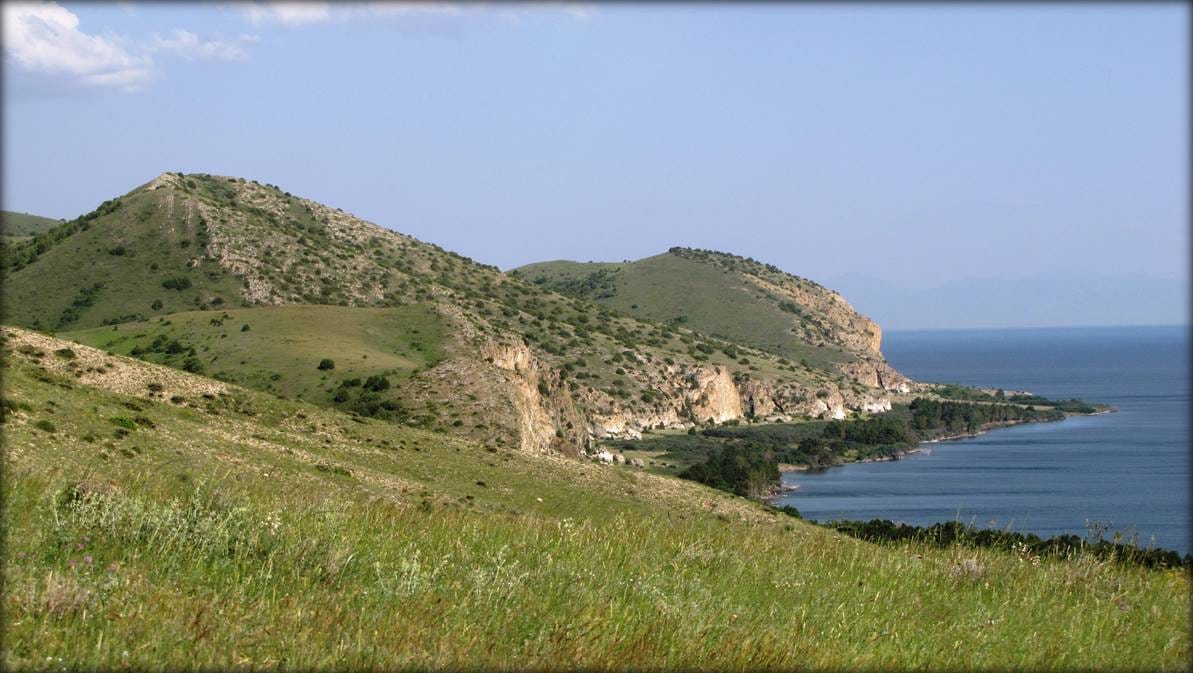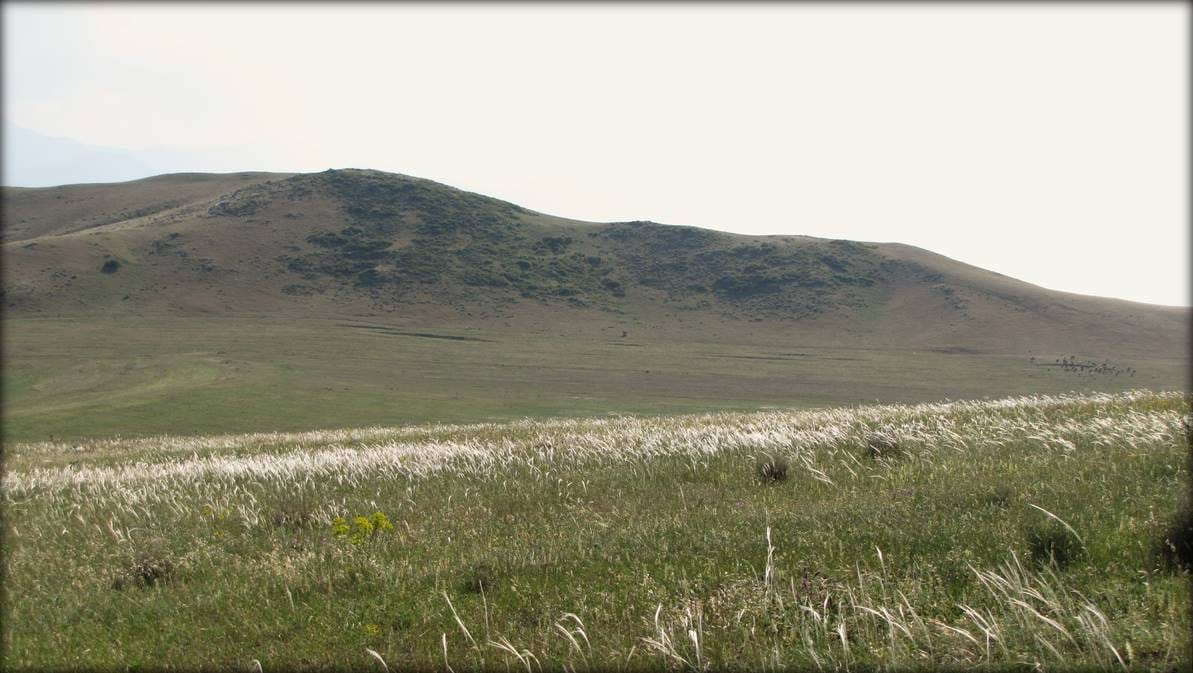|
General description:
The area (about 62,100 ha) is located at the southern slopes of Aregouni mountain ridge at the north-eastern shore of the Lake Sevan, at elevations from 1900 to 2500 m above sea level. The average steepness of slopes is about 10˚ to 15˚. The area is mostly represented by calcareous grasslands alternated with juniper woodlands, and meadows, some smaller patches are covered by residual oak woodlands. Dominant vegetation at the rangelands are grasses (Poa sp. Festuca sp. etc), and legumes (Astragallus sp., Onobrychis sp, Trifolium sp., etc.); among bushes are tragacanths, sainfoin (Onobrychis cornuta), and rosehip (Rosa sp.); among trees are juniper (Juniperus polycarpos) and hawthorn (Crataegus). Despite on the general cold climate of the Lake Sevan the site, which is located at southern face is relatively warm, which makes possible growing apricots by local farmers. Description of butterfly diversity: Number of butterfly species in the area – 111 (49% of total number of species in Armenia). Two of the species included in IUCN Red List, 10 species included in European Red List, 7 species included in National Red Data Book. The species of national and international concern are: Carcharodus lavatherae, Carcharodus flocciferus, Parnassius mnemosyne, Colias aurorina, Tomares callimachus, Pseudophilotes vicrama, Maculinea arion, Maculinea alcon, Ultraaricia crassipuncta, Polyommatus dorylas, Polyommatus damon, Polyommatus ninae, Pseudochazara schahrudensis, Pseudochazara beroe, Hipparchia statilinus, Chazara briseis, Brethis ino. Threats: The area is located in recreational and buffer zones of the National Park and therefore is used by surrounding communities and tourists. Such activities create might have the negative influence on the ecosystems of the area; among threats the overgrazing and intensive mowing should be highlighted. The livestock, which is breed the surrounding communities (cows and sheep) can potentialy cause removal of the host-plants and slope erosion. Also at the end of summer (which is by the way the hot tourism season at the Lake Sevan area), the occasional fire caused by non-careful behaviour becomes one of the serious risks. The mentioned threats negatively influence the following species: Carcharodus lavatherae, Carcharodus flocciferus, Tomares callimachus, Pseudophilotes vicrama, Maculinea arion, Maculinea alcon, Ultraaricia crassipuncta, Polyommatus dorylas, Polyommatus damon, Polyommatus ninae, Polyommatus firdussii, Polyommatus vanensis, Pseudochazara schahrudensis, Pseudochazara beroe, Chazara briseis, Hipparchia statilinus, Brethis ino. It should be noted that the area is isolated from the other Onobrychis cornuta dominated dry mountain steppes in Armenia. Therefore such species as Tomares callimachus, Polyommatus firdussii, Polyommatus vanensis, Pseudochazara schahrudensis, and some others are represented in isolated populations. The phenomena has a significant scientific potential for taxonomy and conservation potential for protection of genetic diversity. To secure conservation of the area it is important to place sustainable practices of grazing management and mowing, and to improve fire security in the area. It is also important to collaborate with the surrounding communities with the main aim of increasing number of butterfly-watchers in the area. In 2015-2016 the negotiations with the Lake Sevan National Park have been conducted, and they lead to development of annual butterfly monitoring in the area and negotiations in development of butterfly-watching in the PBA. In particular the butterfly-watching trail Artanish Steppe was developed. The work on assessment of the PBA Artanish-Shorzha is supported by Rufford Foundation. |
© BirdLinks Armenia NGO, 2014
Charity Registration Number 03A968527
Charity Registration Number 03A968527





